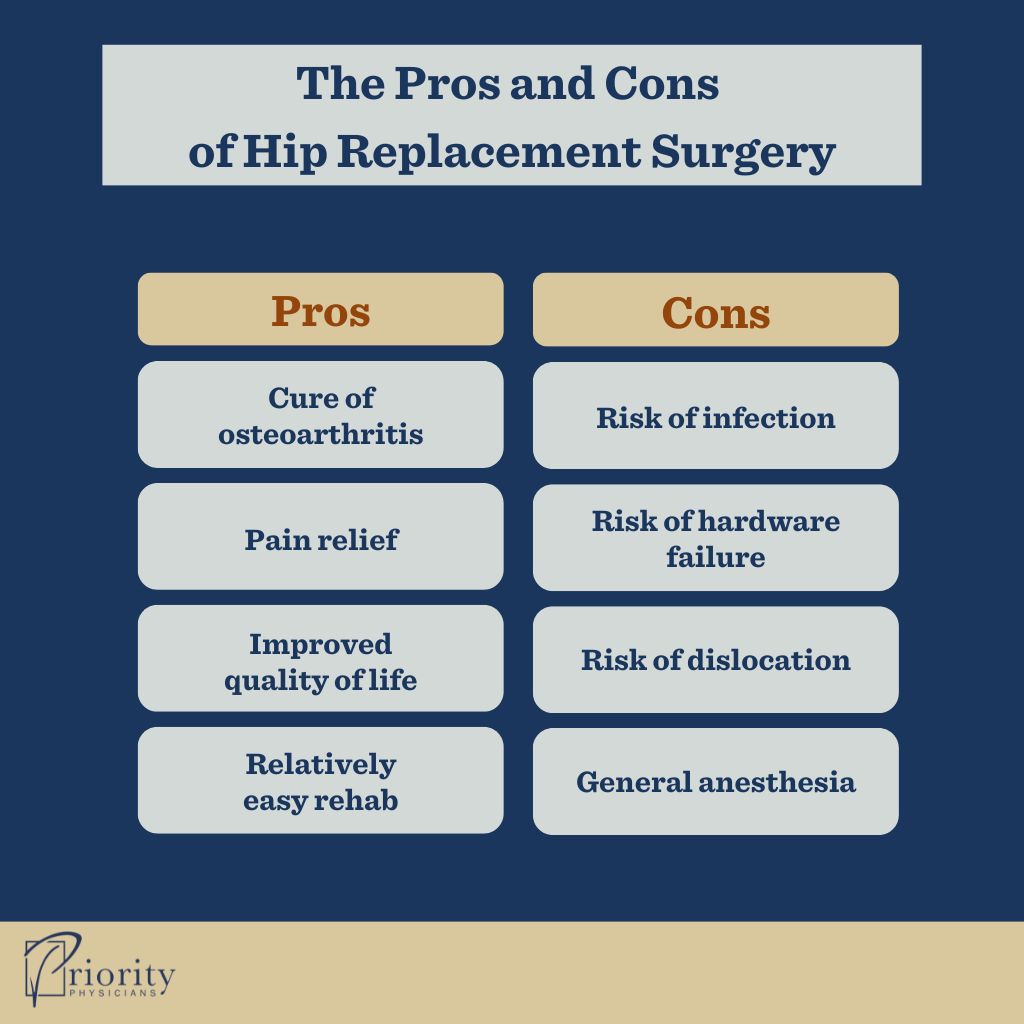When it comes to joint replacement surgery, many people are hesitant.
We totally get it. I myself recently had a partial knee replacement and have worked with many patients who go through a joint replacement of some kind. It’s a big surgery, and the fear of infection or the thought of a foreign object in their body concerns people.
But for all the calculated risks of joint replacement surgery, one of the biggest misconceptions is, “I’m too young for this.”
You may think 50 is too young to get a knee or hip replacement. But if it means more years of participating in your favorite activities, is there really such a thing as too young?
Many people delay and delay, waiting to get a joint replacement until they reach 70, 75, or even 80 years old. The problem isn’t that you can’t have the surgery at that age; it’s that you endure so many unnecessary years of pain and missing out on the things you love in life.
Almost universally, the biggest response we hear after a successful joint replacement is, “I wish I’d done this sooner.”
So let’s take an honest look at hip, knee, and shoulder replacement surgeries, when you should get them, and the pros and cons of each.
The Pros and Cons of Hip Replacement Surgery
The most common reason for a hip replacement is osteoarthritis, which involves the deterioration of joint cartilage. This breaking down of cartilage leads to a lot of pain and limited mobility. Less common reasons for a hip replacement include inflammatory arthritis (such as rheumatoid arthritis) and hip fracture.
At what point do you need a hip replacement? If your hip arthritis interferes with your quality of life, then the answer is: Whenever you’re ready.

Non-Surgical Alternatives for Hip Pain
If you aren’t quite ready to commit to surgery, you have some alternative options to manage hip pain. Physical therapy can help maintain range of motion and mobility in the joint, as long as the arthritis isn’t advanced. Injections, such as corticosteroids, can also help relieve some inflammation and discomfort in the joint.
Another non-surgical option is to avoid activity, especially weight-bearing activity. But the hip is, intrinsically, a weight-bearing joint. So unless you’re willing to give up most activities of a normal life, surgery really is the only option to effectively cure osteoarthritis hip pain.
Pros of Hip Replacement Surgery
Pain relief. The biggest pro of hip replacement surgery is that it gets rid of osteoarthritis pain permanently. Without surgery, you’ll continue to have the problem of bone-on-bone pain, even with alternative treatments. But once you replace that joint, the pain relief is immediate.
Easier rehab. Another pro of hip replacement is that the rehab is generally the easiest of all joint replacement surgeries. You’re often standing up and bearing weight within a day of surgery.
Cons of Hip Replacement Surgery
Risk of infection. As with any surgery, there are some cons to hip replacements. The biggest con is the risk of infection. If an infection takes hold in a prosthetic joint, it often requires another surgery or removal of the hardware.
Risk of hardware failure. Other risks include the breaking of the joint replacement hardware, though this is less common with the materials used in modern joint replacements. Loosening of the hardware over time is also a possibility.
Risk of dislocation. Hip joints following hip replacement surgery can actually become dislocated with less effort than you might imagine. For example, certain aggressive activities and movements or even physical therapy can inadvertently put the patient in vulnerable positions, resulting in dislocation.
General anesthesia. Depending on your medical condition, general anesthesia always carries a risk. If you have significant heart disease, for example, you might not be a good candidate for any surgery requiring general anesthesia. However, patients are screened for these kinds of risk factors ahead of time.
The Pros and Cons of Knee Replacement Surgery
The knee is the most commonly replaced joint in the body, typically due to advanced osteoarthritis. Because the knee joint bears the most weight, it’s most affected by arthritis.
This is especially true for athletes or very active people who run or exert a lot of force on the knee. That being said, running doesn’t predispose you to arthritis. Running can, however, exacerbate and accelerate the deterioration once your cartilage is damaged.
Cartilage covers the ends of the three bones that make up the knee joint: the tibia, the femur, and the patella. When those cartilage cushions thin or disappear, the bones grind against each other, causing significant pain and suggesting a knee replacement. Soft tissue damage, like injury to a meniscus or ligament, doesn’t require joint replacement.
Non-Surgical Alternatives for Knee Pain
There are a few more non-surgical alternatives for knee pain than for hip pain.
Muscle strengthening exercises that focus on the quadriceps can help stabilize the knee. Anti-inflammatories like Advil or pain relievers like Tylenol can help manage the pain and swelling in early stage osteoarthritis.
As arthritis advances, cortisone shots may provide relief from pain and inflammation. Viscosupplementation, or injections of a hyaluronic acid gel to supplement your body’s natural fluids, can also help.
Stem cell joint injections are another emerging treatment option for restoring and repairing damaged cartilage in cases of advanced knee arthritis. Researchers are also working on growing the body’s own cartilage in a lab for implantation back into the body to replace damaged cartilage.
For now, however, the only true cure for the pain of an arthritic knee is knee replacement surgery.
Pros of Knee Replacement Surgery
Pain relief. Similar to hip replacement surgery, the biggest pro of getting a knee replacement is that the arthritis pain is gone and it can’t come back. After you complete your rehab and recovery, you should be able to return to much of your regular activity, pain free.
Cons of Knee Replacement Surgery
Challenging rehab. One of the biggest cons of knee replacement surgery is the rehabilitation. The residual pain during recovery is often greater than with a hip replacement, but rehab must start right away. Regaining full mobility in the knee requires serious physical therapy, and it can be challenging, especially for people who are older, overweight, or out of shape.
On the other hand, anyone needing a knee replacement has been dealing with significant and seemingly unending arthritis pain for some time. If you go into surgery knowing you only have to deal with the post-op pain for a short time and with a mindset to tackle the physical therapy, you’ll soon be off to the races.
Mechanical feel. Another con of knee replacement surgery is that your new knee won’t feel quite like your natural knee (back before arthritis set in). It can have a somewhat mechanical feel; you might even feel or hear popping or clicking, and it won’t be able to handle everything that a healthy, natural knee could. So while your pain will be gone, you might find your new hardware disconcerting at first.
As with hip replacement surgery, additional cons of knee replacement surgery include risks like:
- Infection
- Hardware failure
- Dislocated joint, specifically the kneecap
- General anesthesia
Partial Knee Replacement Surgery
Sometimes, arthritis or cartilage loss only impairs one of the three components of the knee.
In such a case, you could be a candidate for partial knee replacement surgery. Partial joint replacement is unique to the knee and isn’t an option for the hip or shoulder.
Partial knee replacements typically recover faster and feel more natural than total knee replacements. They can also typically return to a normal activity level more easily.
The Pros and Cons of Shoulder Replacement Surgery
Just like the other two joints discussed here, shoulders most often need replacing due to osteoarthritis, or the wearing away of cartilage in the joint. Unlike the other joints, however, the shoulder joint isn’t weight-bearing. Because of that, the wear and tear that leads to a shoulder replacement comes from repetitive motion over time or injury.
Athletes like swimmers and pitchers who perform the same overhead motions again and again can wear out their shoulders, though the need for shoulder replacement surgery usually starts with an earlier injury in their life. Injuries that seriously damage the shoulder cartilage, like a traumatic dislocation, can also be enough to warrant shoulder replacement.
Shoulder replacements aren’t as common as hip and knee replacements, though they’re still the best cure for advanced injury and pain. But because shoulders don’t bear weight, they respond better than the other joints to some alternative surgical options, like minimally invasive arthroscopic tissue repair.
Non-Surgical Alternatives for Shoulder Pain
Shoulders have some non-surgical options for treatment as well.
Physical therapy can help strengthen and support the shoulder joint, and medications like Tylenol and anti-inflammatories can help manage pain. As with knee joints, cortisone shots or viscosupplementation can help with pain and inflammation. Stem cell therapy may also prove helpful.
Pros of Shoulder Replacement Surgery
Recovery time. Shoulder replacement surgery involves much less recovery time than a knee replacement, though some physical therapy is necessary.
Pain relief. Once your shoulder joint is replaced, you’ll no longer experience bone-on-bone arthritis pain.
Cons of Shoulder Replacement Surgery
Risk of dislocation. Shoulder replacements are perhaps more vulnerable to dislocation than any of the other replacements simply because it’s easier and more common to put the joint into vulnerable overhead positions.
As with the other joints, some additional cons of shoulder replacement surgery include:
- Risk of infection
- Risk of hardware failure
- General anesthesia
Reverse Shoulder Arthroplasty
Another option for shoulder replacement surgery is a reverse shoulder arthroplasty, which reverses the ball-and-socket joint. The arm bone, which normally ends in the “ball” part of the joint, becomes the “socket” instead. It looks something like a golf tee with a cupped area where the “ball” of the shoulder then sits. This type of surgery is becoming a more common treatment for shoulders that need replacement.
The Bottom Line on Joint Replacement Surgery
Joint replacement surgeries can seem frightening, invasive, or dangerous, causing many people to put them off or even reject them entirely. But the reality is, the majority of joint replacements are safe and they restore people to a level of activity and quality of life they’ve lost due to pain.
So if you have pain from joint damage, we encourage you not to let fear of surgery stop you from talking with your doctor about your options. And if joint replacement surgery is right for you, remember that following your surgeon’s instructions will limit your risk, and that your surgery can return you to a full and active life.

